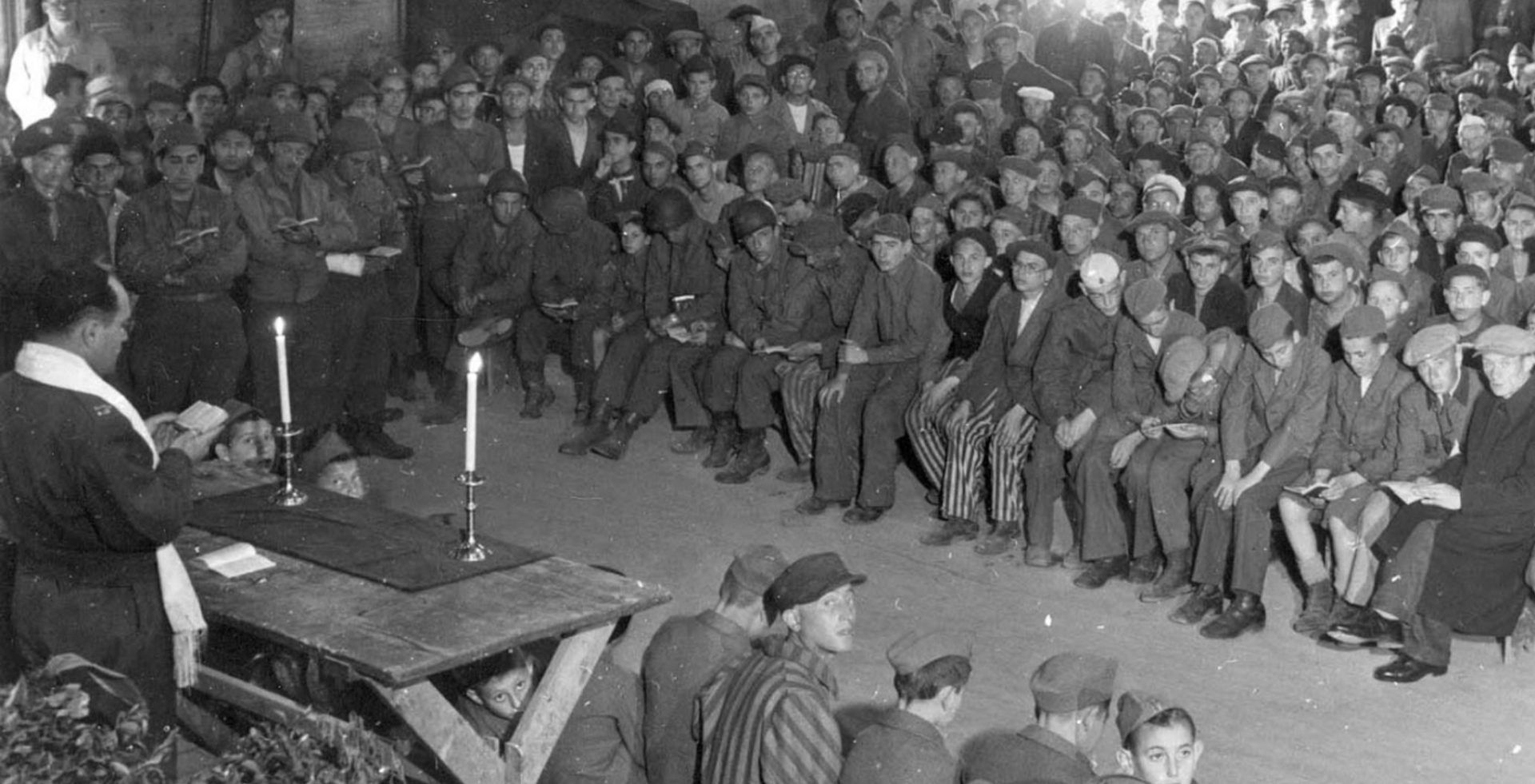
Rabbi Herschel Schacter was a young U.S. Army chaplain who helped traumatized Holocaust survivors rebuild their lives, and later became an influential leader in the Orthodox movement and a strong advocate for Soviet Jewry.
Herschel Schacter was born in Brooklyn in 1917, the son of immigrants from Poland and the youngest of ten siblings. His family was religious, and he was educated at the finest yeshivas before obtaining smicha (rabbinic ordination) in 1941. Rabbi Schacter served as a pulpit rabbi for a year before enlisting in the Army after Pearl Harbor. After attending Army Chaplain school at Harvard, he was sent to Europe with the VIII Corps and fought in the Battle of the Bulge.
Rabbi Schacter was one of the liberators of the Buchenwald concentration camp. He stayed in Germany for two and a half months after the war, tending to the broken spirits of survivors, most of whom had lost their entire families. Many were the only survivor from their entire town; everyone they ever knew had been murdered. A famous photograph shows him leading Shavuot services at Buchenwald (above). This photo occupies an entire wall at Israeli Holocaust Memorial Yad Vashem.
What Rabbi Schacter saw at Buchenwald was hell on earth. The inmates who were still alive – barely -were emaciated, lying on filthy planks and covered in lice, hollow-eyed ghosts blinking in the sunlight and without the energy to even lift their heads. The stench of rotting flesh and feces was overwhelming.
Rabbi Schacter noticed Yisrael Meir Lau, 7 years old, hiding behind a pile of corpses. Known as Lulek, the child had lost most of his family and had been on his own since age 5. Rabbi Schacter cared for the boy and helped him immigrate to Israel, where he would one day become Chief Rabbi.
Rabbi Schacter’s son Jacob, a prominent Orthodox rabbi and professor at Yeshiva University, wrote in a piece for Tablet Magazine, “My father spent the rest of his life describing what he saw in Buchenwald and what he did during his 10 weeks there. His work focused on a number of different areas: he tended to the psychological needs of survivors; he worked hard to reunite families; he founded a kibbutz outside Weimar for young survivors preparing to make aliyah [move to Israel]; and he organized a transport of children to Switzerland.”
Another story that illustrates Rabbi Schacter’s massive impact concerns Yoav Kimmelman, a 16 year old from a Hasidic home who lost every single member of his large extended family, around 60 people. The Holocaust destroyed Yoav’s faith and identity as a Jew. According to Rabbi Jacob Schacter, Yoav was “done with God, done with Jewish life, done with Jewish destiny, done with the Jewish people.” Rabbi Herschel Schacter reached out – literally – and singlehandedly brought Yoav back to Jewish life. It happened when Rabbi Schacter was taking 200 child survivors to Switzerland. He wanted young Yoav to go with him, but the boy had no interest in being around fellow Jews and he refused to go. Rabbi Schacter asked him to come to the train station to say goodbye and while there, the rabbi reached down and physically dragged Yoav onto the train. The teen was angry and sullen, but the rabbi convinced him to join a minyan and read Torah in the DP camp. Long story short, Yoav Kimmelman remained religious and at his death, he left 80 descendants, all of them Torah Jews. “That’s all because my father had the guts to pull him onto that train when it left the station,” said Rabbi Jacob Schacter.
Rabbi Herschel Schacter became a prominent leader of Orthodox Judaism in America, helping to rebuild from the ashes and grow the movement. He was elected president of the Conference of Presidents of Major Jewish Organizations in 1968. Dr. Rafael Medoff, in his book “The Rabbi of Buchenwald,” wrote: “He was the first Orthodox rabbi to reach that level of leadership. Until then others saw Orthodox leaders as fit to be heads of Orthodox groups, but not larger ones. Rabbi Schacter broke that mold. He was sufficiently savvy and sophisticated to represent the entire [Jewish] community, not just the Orthodox minority.”
At the very beginning of the movement to free Soviet Jewry, in 1956, Rabbi Schacter was part of the first rabbinical delegation to visit the USSR since 1917. He then went to Hungary to help Jewish refugees flee during the Hungarian revolution.
Rabbi Schacter served as a pulpit rabbi in the Bronx for more than 60 years and was known as a brilliant and inspiring orator, beloved by his congregation. He passed away in 2013 at age 95 and was survived by his beloved wife Pnina, two children, four grandchildren, and eight great-grandchildren. Pnina Schacter died in 2018.
For healing the broken spirits of Holocaust survivors and helping them rebuild their lives, and for his devotion to the Jewish people and his decades of leadership, we honor Rabbi Herschel Schacter as this week’s Thursday Hero.
Get the best of Accidental Talmudist in your inbox: sign up for our weekly newsletter.